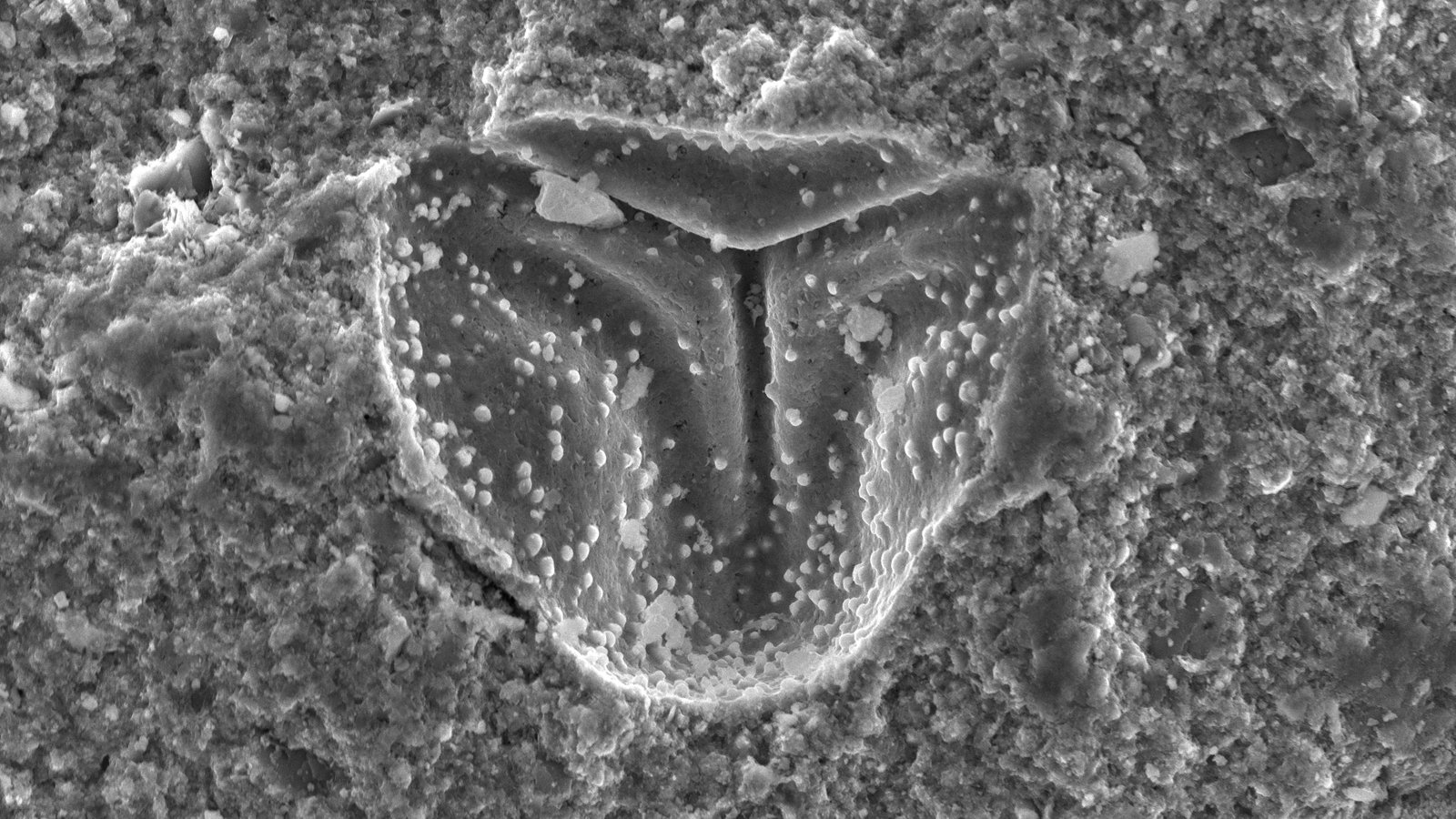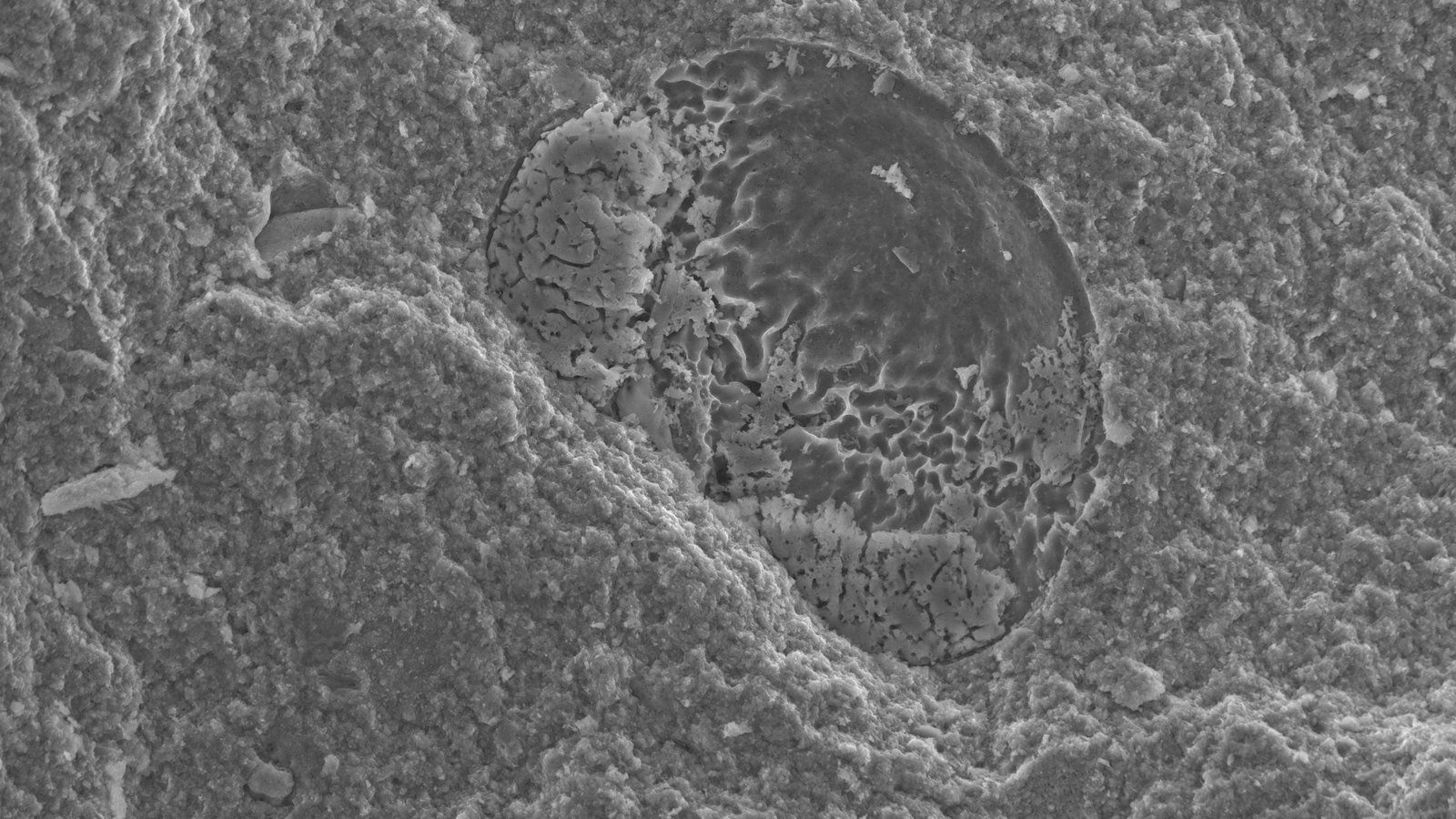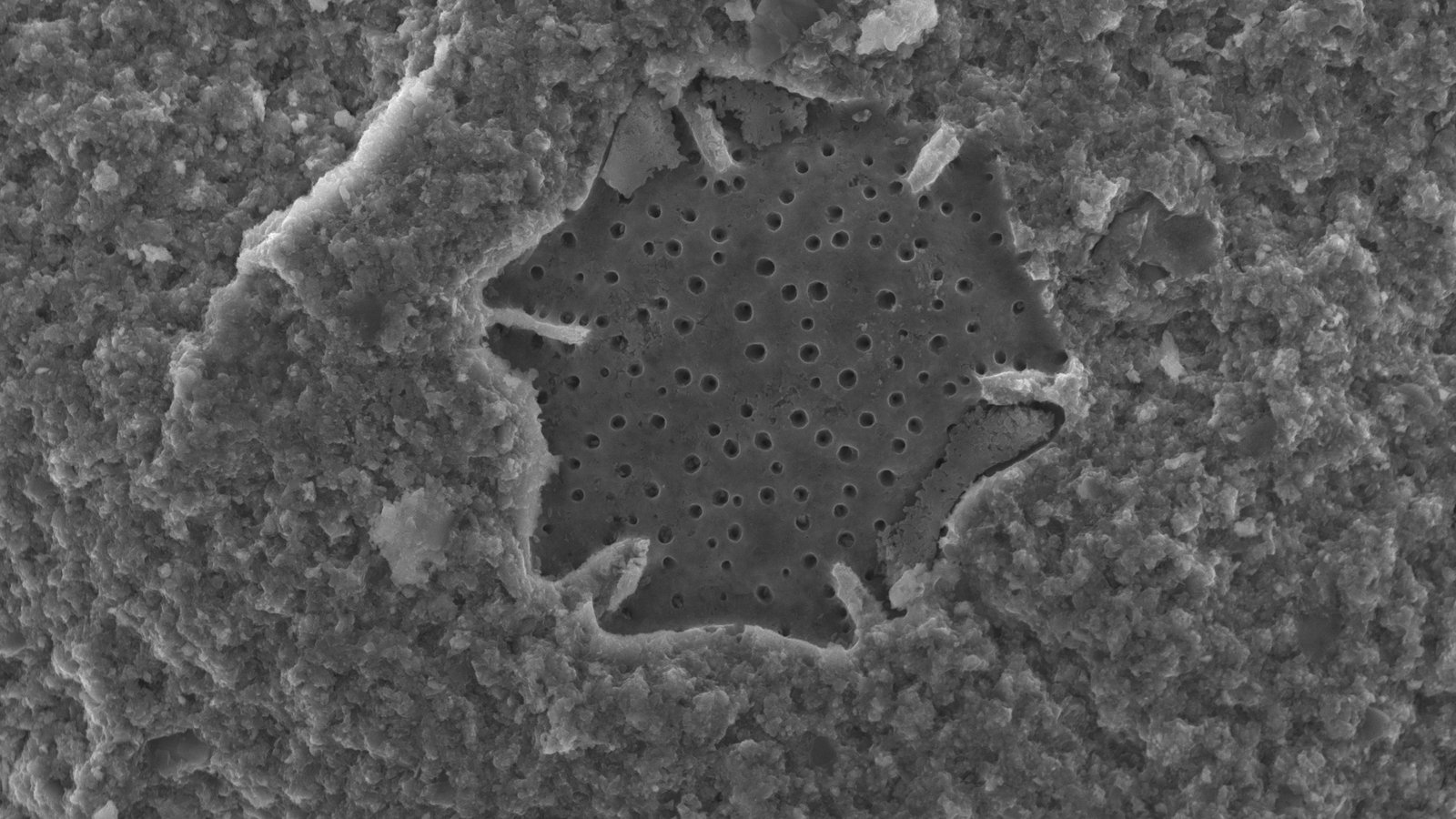Date a Fossil
Become a palaeontologist from home and help us to reveal new information about ancient ecosystems.

The fossil record documents the impact of environmental change on past ecosystems. Using data on the age and composition of fossil deposits, palaeontologists gradually build evidence of how ecosystems have changed over time. Many fossil sites in Australia are hard to fit into this picture, as we lack sufficient data on their age and environmental characteristics.
AM and UC palaeontologists have recently discovered that some fossil sites that were previously thought to be devoid of microfossils do preserve characteristics of their past ecosystems including minuscule pollen, fungi and algae. While unable to be seen with the human eye, these microscopic clues to the past can be identified using a scanning electron microscope (SEM). These microfossils may provide the key to documenting the age and environmental conditions at a range of new fossil localities.
The AM aims to engage citizen scientists to identify microfossils within images automatically collected using a SEM. The resulting data will provide scientists with information about the variety and relative abundance of the microfossils in fossil sites, ultimately helping us better understand Australia's past.
The Date a Fossil project is a collaboration between the Australian Museum and The University of Canberra.
SEM images were taken on a FEI 650F SEM at the Centre for Advanced Microscopy, ANU, a node of Microscopy Australia.







